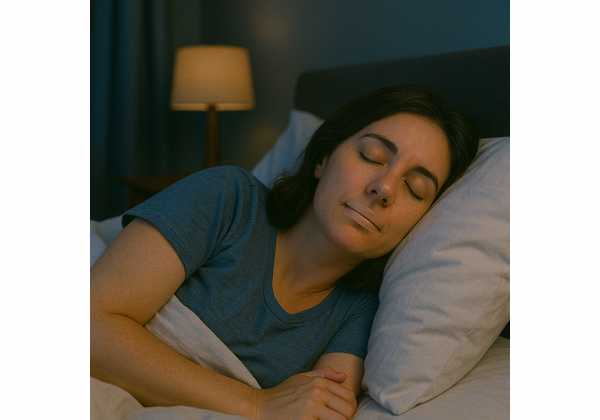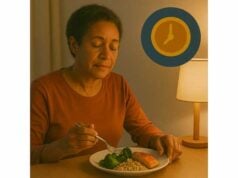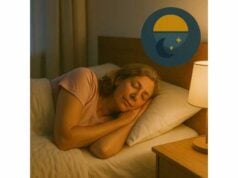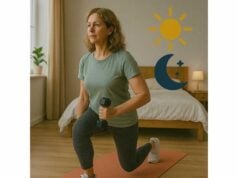
Mouth breathing at night sounds harmless—until it is not. Dry mouth, sore throat, snoring, and restless sleep are the common clues; drops in blood oxygen and higher blood pressure over time are the deeper concerns. The goal of this guide is practical: help you understand when nasal breathing truly improves sleep and recovery, when taping the mouth is unsafe, and what safer, evidence-based alternatives you can use tonight. We will cover nasal hygiene, allergy control, tongue posture, and gentle airway tools you can test methodically. You will also see a cautious, stepwise protocol for trialing nighttime nasal breathing without taking risks. If you are building a broader system for better sleep and stress resilience, explore our hub on sleep, stress, and recovery strategies—then weave the simple routines below into your day.
Table of Contents
- Nasal Breathing Benefits for Sleep and Blood Oxygen
- When Mouth Taping Is Not Safe and Alternatives to Use
- Nasal Hygiene: Saline, Humidification, and Allergy Strategies
- Tongue Posture, Airway, and Oral Health Considerations
- A Safe Step by Step Trial of Nighttime Nasal Breathing
- When to Seek Evaluation for Deviated Septum or Apnea
- Tools That Help: Nasal Dilators, EPAP, and Positioning
Nasal Breathing Benefits for Sleep and Blood Oxygen
Nasal breathing does more than keep the mouth comfortable. The nose conditions air before it reaches the lungs—warming, humidifying, and filtering particles—and it meters airflow in a way that stabilizes the upper airway during sleep. When you inhale through your nose, the paranasal sinuses release small amounts of nitric oxide (NO). This gas acts locally in the airways and in the lungs to dilate vessels and improve blood–gas exchange. Put simply: nasal breathing makes oxygen uptake more efficient for the same breath, which can support steadier saturation numbers during the night.
Nasal breathing also changes the mechanics of the upper airway. When the jaw stays closed and the tongue contacts the palate, the soft tissues in the throat are less likely to collapse. That matters most in supine (back) sleep or when muscle tone falls during REM. For some people with snoring or mild obstructive patterns, sealing the lips—by habit or with a chin support—reduces fluttering tissues in the oropharynx and lowers vibration noise. However, the benefit depends on whether the nose is actually open. For many adults, allergies, septal deviation, turbinate swelling, or simple dryness make nasal airflow inconsistent. If you cannot move air comfortably through the nose when awake, forcing it at night can backfire.
There is also a nervous-system angle. Nasal, slower breathing favors diaphragmatic motion and can downshift sympathetic arousal in the evening. People report fewer wake-ups tied to mouth dryness, less thirst, and easier returns to sleep after brief awakenings. Those effects, while subjective, compound with better sleep hygiene: cooler rooms, earlier meals, and consistent light exposure patterns. If you are implementing circadian routines—morning outdoor light and evening dimming—nasal breathing becomes the third leg of the stool.
Finally, consider oral health. Open-mouth sleeping dries saliva, raising the risk of gingival inflammation and tooth decay. Restoring nasal breathing often reduces morning halitosis and can improve dental comfort. Dentists sometimes see fewer nocturnal clenching episodes when patients fix nasal airflow and stabilize tongue posture, because the jaw no longer needs to “prop” the airway open.
Bottom line: nasal breathing is a meaningful sleep lever if the nose is patent and the airway is otherwise stable. The work ahead is to make nasal airflow reliable and to test changes safely.
When Mouth Taping Is Not Safe and Alternatives to Use
Mouth taping became popular as a shortcut to nose breathing, but it is not appropriate for everyone. The risk is straightforward: if your nose clogs during sleep or your airway collapses, blocking mouth breathing removes a safety valve. That can worsen oxygen dips, prolong apneas, or trigger panic awakenings. People with any of the following should avoid mouth taping until a clinician clears it:
- Suspected or diagnosed obstructive sleep apnea (loud snoring, witnessed pauses, choking or gasping, morning headaches, daytime sleepiness).
- Chronic nasal obstruction from allergies, polyps, severe septal deviation, or recurrent sinus infections.
- Nasal trauma, recent surgery, active upper-respiratory illness, or frequent nosebleeds.
- Cardiopulmonary disease, neuromuscular disease, or conditions affecting arousal from sleep.
- Skin conditions or anxiety disorders worsened by adhesives or facial occlusion.
Even in lower-risk people, mouth tape can cause skin irritation, lip fissures, and anxiety. And because it often “works” by preventing mouth leak on the back, it may mask positional apnea—where the airway collapses mostly in supine sleep—without addressing the root cause. If your goal is better oxygenation and deeper sleep, a safer hierarchy is: open the nose first, optimize sleeping position, and use gentle aids that do not obstruct the mouth.
Safer substitutes you can consider before any lip-closure device:
- Nasal hygiene: isotonic saline rinses, evening humidification, and allergy control (details in the next section).
- Positional strategies for back-dependent snoring (side-sleeping aids, cushion systems).
- Nasal dilators (external spring strips or internal stents) that mechanically widen the nasal valve without sealing the lips.
- Chin support that discourages jaw drop but does not seal the mouth; it allows emergency mouth breathing if nasal airflow fails.
- Professional evaluation if snoring is loud, nightly, or paired with daytime sleepiness. Start with a review of apnea signs here: sleep apnea basics.
If you ultimately trial a lip-closure product, use dedicated sleep patches that release easily, and never use occlusive household tapes. But remember: the safest plan is to treat the nose and optimize position first, then reassess symptoms.
Nasal Hygiene: Saline, Humidification, and Allergy Strategies
A clear nose is the foundation. Many adults have intermittent obstruction that worsens at night: turbinates swell in the recumbent position, dry indoor air irritates mucosa, and allergens accumulate on bedding. A simple hygiene routine reduces resistance, increases comfort, and lowers the temptation to mouth-breathe.
Daily saline care
- Use an isotonic saline spray or rinse once or twice daily, especially before bed. Isotonic solutions match the body’s salt concentration, so they moisturize without stinging. Hypertonic rinses can be helpful in short courses during colds or high-pollen weeks but may feel harsh for routine use.
- If you use a neti pot or squeeze bottle, clean it after each use and fill it with distilled, sterile, or previously boiled and cooled water—never straight from the tap.
- A gentle sequence: blow nose, perform a 30–60 second rinse per nostril, then wait a few minutes and blow again. Follow with your prescribed intranasal steroid if you use one; saline first improves medication contact.
Evening humidification
- Indoor winter air can drop below 30% relative humidity. Use a clean ultrasonic or evaporative humidifier to maintain 40–50% in the bedroom. Refill with distilled water and clean tanks regularly to prevent biofilms.
- CPAP users often benefit from heated humidification to reduce mouth leak and nasal dryness; similar principles apply if you live in a dry climate or use forced-air heating.
Allergy control
- Launder pillowcases and sheets weekly in hot water; encase pillows and mattresses if dust mites are a problem.
- Shower or rinse your nose after evening outdoor exposure during pollen seasons.
- Discuss intranasal corticosteroids and second-generation antihistamines with your clinician if symptoms persist beyond a few weeks. For stubborn congestion, short courses of prescription anticholinergic sprays can reduce watery rhinorrhea, especially at night.
- Avoid nightly use of topical decongestant sprays; overuse can cause rebound congestion. Save them for brief, targeted windows (e.g., during a bad cold or before a flight) and respect the labeled duration.
Bed and room setup
- Elevate the head of the bed 10–15 cm if reflux worsens congestion at night.
- Keep bedrooms cool (17–19°C) and dark; heat dries mucosa and fragments sleep.
- Consider a HEPA purifier if you share the room with pets or live in areas with wildfire smoke.
You will know the routine is working when: mouth dryness fades, you wake less to drink water, and your first few breaths after lying down remain through the nose. At that point, you can layer positional strategies or gentle airway tools as needed. For more room-level sleep improvements, see practical steps in sleep-friendly setups.
Tongue Posture, Airway, and Oral Health Considerations
Tongue position is a quiet driver of airway stability. During wakefulness, the tongue should rest lightly against the palate, with the tip behind the upper front teeth and lips sealed. This posture encourages nasal breathing and helps keep the retrolingual space open. At night, as muscle tone falls, the tongue is more likely to slide backward—especially in supine sleep—narrowing the airway and increasing snoring.
What to look for
- Scalloped tongue edges (indentations where the tongue presses against the teeth), chronic dry mouth, and morning sore throat point toward nighttime mouth breathing.
- High arched palate or narrow dental arches can reduce oral volume and predispose to obstruction.
- Bruxism (teeth grinding) and jaw clenching sometimes occur as the body’s attempt to stabilize a collapsing airway.
Daytime habits that help
- Practice a nasal-breath, lips-sealed posture during reading, computer work, and TV. Short 3–5 minute sets a few times per day can retrain default breathing.
- Use a gentle tongue-elevation drill: press the entire tongue against the palate while slowly inhaling through the nose for four counts; release on an easy nasal exhale for six. Repeat 5–10 times.
- If you wear a night guard, have your dentist or orofacial specialist evaluate whether it supports or hinders tongue space.
When to involve professionals
- ENT evaluation if you have persistent nasal blockage or a suspected deviated septum.
- Dentist or orofacial myofunctional therapist if you have oral crowding, tongue-tie concerns, or difficulty maintaining palatal tongue posture.
- Sleep specialist if snoring is loud and nightly, or if your bed partner sees pauses or gasps.
For people who snore without obstructive sleep apnea, optimizing tongue posture and nasal airflow often makes the biggest difference. A practical primer on patterns and mechanical fixes is here: snoring without apnea basics. Keep expectations realistic: posture drills are adjuncts, not cures, and work best when paired with rock-solid nasal hygiene and evening routines.
A Safe Step by Step Trial of Nighttime Nasal Breathing
If you have no red-flag symptoms for sleep apnea and your nose feels clear by day, you can run a careful trial to see whether nasal-first sleep reduces snoring, dryness, or awakenings. Think of this as a two-week experiment with checkpoints.
Screen yourself first
- Do you snore loudly, most nights? Do you pause or gasp in sleep, or wake choking? Do you feel sleepy while driving? If yes to any, skip this trial and pursue testing.
- Can you breathe through your nose comfortably for 3–5 minutes at rest? If not, fix the nose first (saline, humidification, allergy measures) before any nighttime interventions.
Week 1: prepare the airway, no mouth devices
- Nasal routine nightly: isotonic saline rinse, then (if prescribed) your intranasal steroid.
- Bedroom setup: 40–50% humidity; warm, low light after sunset; finish dinner 2.5–3 hours before bed.
- Position: encourage side-sleeping with a body pillow; avoid back-sleeping if it worsens snoring.
- Optional: external nasal strips or soft internal dilators to test comfort and airflow.
- Track: bedtime, wake time, estimated sleep latency, number of awakenings, morning mouth dryness (0–10), and partner-rated snoring (0–10).
Week 2: add gentle lip support (not full sealing)
- If Week 1 is comfortable, consider a light adhesive “center-release” strip designed for sleep (a vertical strip that leaves the mouth corners free). These products discourage mouth gaping but allow emergency mouth breathing.
- Alternatively, use a soft chin support that keeps the jaw from dropping open without taping the lips.
- Keep all Week 1 steps; adjust pillow height to maintain neutral neck alignment.
What success looks like
- Less morning dryness and sore throat.
- Fewer awakenings and easier returns to sleep.
- Partner reports less snoring, especially on your side.
- You wake with a moist mouth and clearer nose.
Stop immediately if you feel suffocated, panicky, or congested; if your partner notices pauses; or if daytime sleepiness worsens. If you track sleep with a device, watch for rising respiratory disturbance flags or heart-rate spikes. For a quick primer on what is worth tracking (and what is noise), see useful wearable metrics.
Important: never tape a child’s mouth, and do not use mouth tape if you are ill, sedated, or use substances that blunt arousal. Safety first; there are many other levers to improve sleep without closing the lips.
When to Seek Evaluation for Deviated Septum or Apnea
Self-care has limits. Certain patterns point strongly to structural nasal issues or sleep-disordered breathing that deserve targeted evaluation.
Strong reasons to see an ENT or sleep specialist
- Nightly loud snoring plus witnessed pauses, gasps, or choking.
- Daytime sleepiness, morning headaches, or trouble concentrating despite enough time in bed.
- Nasal blockage that does not respond to 2–4 weeks of saline, humidification, and allergy therapy.
- Frequent nosebleeds, unilateral nasal obstruction, or chronic purulent drainage.
- Facial pain/pressure or recurrent sinus infections that interrupt sleep.
- Jaw pain and severe bruxism alongside snoring or observed breathing changes.
- Cardiometabolic disease (hypertension, atrial fibrillation, diabetes) plus snoring—apnea is common and treatable in this group.
What evaluation may include
- Home sleep apnea test for typical cases, or in-lab polysomnography if you have comorbidities.
- Nasal endoscopy to inspect septum, turbinates, and nasal valve; imaging if surgery is considered.
- Allergy testing if perennial symptoms persist despite medications.
- Dental/craniofacial assessment if malocclusion or oral crowding contributes.
Realistic expectations about nasal surgery
- Septoplasty or turbinate reduction can improve airflow, reduce congestion, and make CPAP or oral appliances more tolerable. On its own, nasal surgery rarely cures obstructive sleep apnea, but it often reduces symptoms and improves quality of life. Think of it as removing a bottleneck so other therapies work better.
What to do while you wait for testing
- Maintain nasal hygiene and side-sleeping.
- Avoid alcohol within 3–4 hours of bedtime; it worsens snoring and airway collapsibility.
- Keep a sleep diary with bed/wake times and daytime sleepiness ratings to share with your clinician.
If your evaluation confirms sleep apnea, a tailored plan—ranging from positional therapy to PAP devices to oral appliances—beats DIY taping every time. For the basics of screening and options, review signs, testing, and treatment and bring your questions to the visit.
Tools That Help: Nasal Dilators, EPAP, and Positioning
Before you reach for tape, consider tools that open the airway rather than occlude it. The right choice depends on where your airflow bottleneck is—nose, soft palate, or tongue—and how your body position changes that bottleneck at night.
Nasal dilators
- External spring strips (applied across the nasal bridge) and internal stents (soft cones or wings) widen the nasal valve—the narrowest part of the nasal airway. People with small nostrils, valve collapse during deep inhalation, or nighttime congestion often feel immediate relief.
- What to expect: lower snoring volume in some users and less dry mouth. Dilators are most effective when combined with saline care. They are low-risk and worth trialing for 1–2 weeks.
Positional therapy
- Many people snore or obstruct mostly on the back. Side-sleeping devices (belts, smart vibration trainers, or even a firm body pillow) reduce supine time and can markedly lower snoring or apnea indices in positional cases.
- Try a pillow strategy first: a long body pillow in front and a rolled towel behind the back to discourage rolling. If that helps, you can invest in a more comfortable dedicated device.
EPAP (expiratory positive airway pressure)
- Nasal EPAP valves adhere over the nostrils and create resistance only on exhale, generating a small positive pressure that can help splint the airway. They do not seal the mouth, and inhalation remains low-resistance.
- Who might benefit: people with mild to moderate obstructive patterns who prefer a minimalist device, particularly travelers. Expect a break-in period; some notice exhalation feels strange the first few nights.
- Who should not use EPAP without guidance: those with significant nasal obstruction or severe apnea. A sleep professional can help decide if EPAP fits your pattern and can review safety.
Chin support and hybrid approaches
- A soft, adjustable chin strap can reduce jaw drop and mouth leak—especially helpful for CPAP users—without occluding the lips. Pair it with a nasal pillow mask or with EPAP if guidance supports the combination.
- If you try a center-release lip strip, remember it is a behavioral cue, not a seal; you should be able to open the mouth easily if the nose clogs.
What to avoid
- Rigid tapes, full-seal patches when you have any nasal symptoms, and DIY adhesives not designed for skin.
- Complex stacks (e.g., dilators + EPAP + tape) without a clear plan. Add one tool at a time and track outcomes.
How to test tools methodically
- Run 4–7 night trials; collect partner snoring ratings, morning dryness, and your perceived sleep quality.
- If you use a wearable, look for trends in respiratory flags and wake after sleep onset rather than chasing nightly noise.
- If a tool helps but not enough, combine it with side-sleeping and stricter evening light hygiene; these often unlock the last 20% of benefit.
You want an airway that stays open without covering your mouth. With steady nasal care, smart positioning, and the right low-risk tools, most people can shrink snoring and improve sleep depth safely—no tape required.
References
- The Impact of Mouth-Taping in Mouth-Breathers with Mild Obstructive Sleep Apnea: A Preliminary Study 2022 (Pilot Study)
- Viral TikTok trends are not the answer for better sleep 2023 (Position/Advisory)
- A Novel Nasal Expiratory Positive Airway Pressure (EPAP) Device for the Treatment of Obstructive Sleep Apnea: A Randomized Controlled Trial 2011 (RCT)
- Nasal Dilators (Breathe Right Strips and NoZovent) for Snoring and OSA: A Systematic Review 2016 (Systematic Review)
- Saline irrigation for allergic rhinitis 2018 (Systematic Review)
Disclaimer
This guide is educational and does not replace personalized medical advice, diagnosis, or treatment. Do not use mouth-taping if you have suspected or diagnosed sleep apnea, chronic nasal obstruction, cardiopulmonary disease, or recent nasal surgery. Seek prompt evaluation for loud nightly snoring, witnessed pauses, choking or gasping during sleep, or excessive daytime sleepiness. Children should never use mouth tape.
If this article helped you, please consider sharing it on Facebook, X (formerly Twitter), or any platform you prefer, and follow us for future updates. Your support helps us continue creating careful, evidence-based resources for healthy aging.










